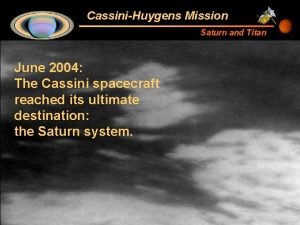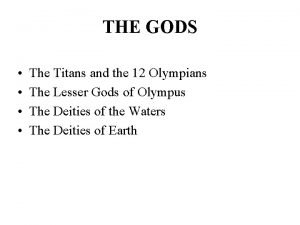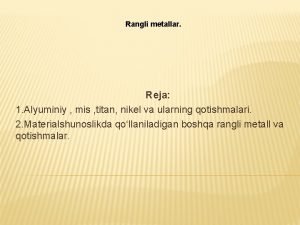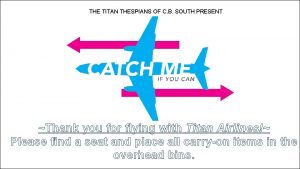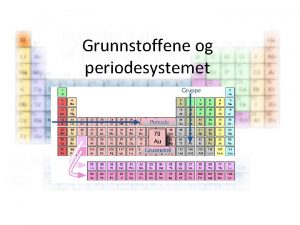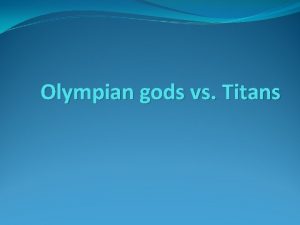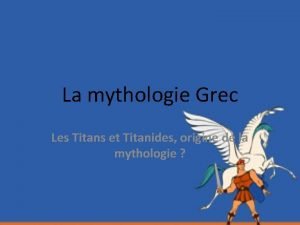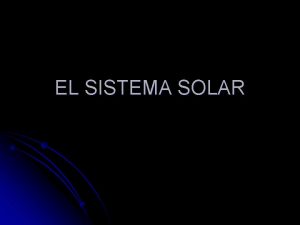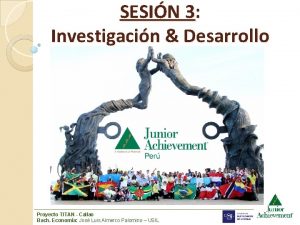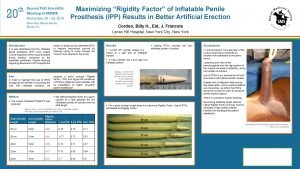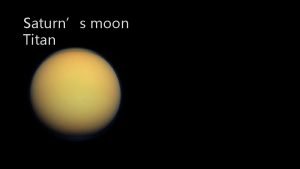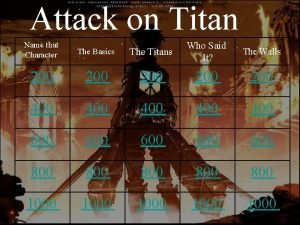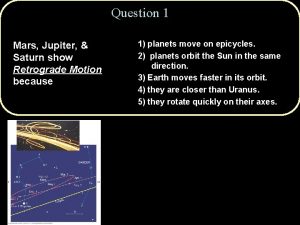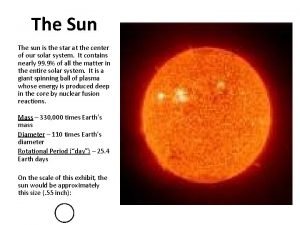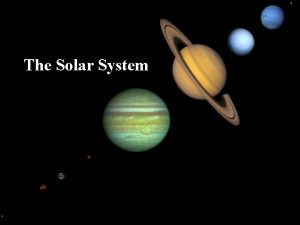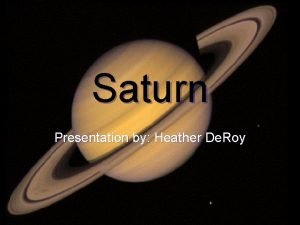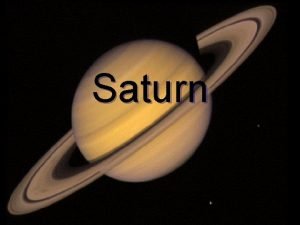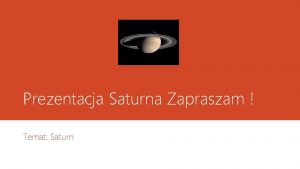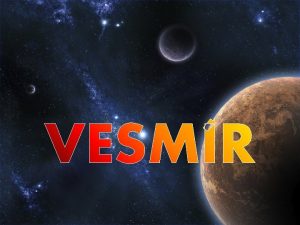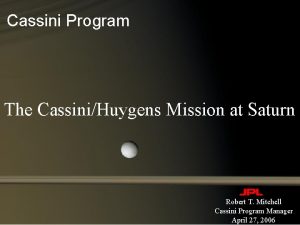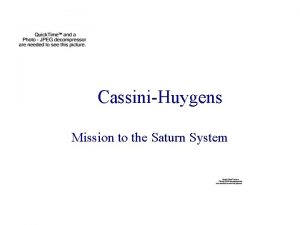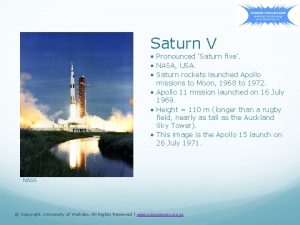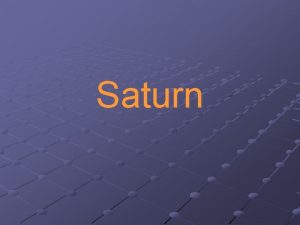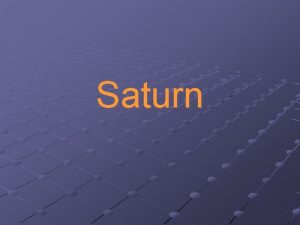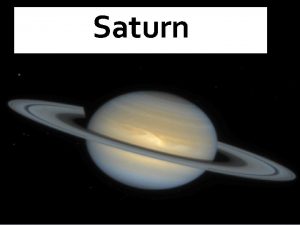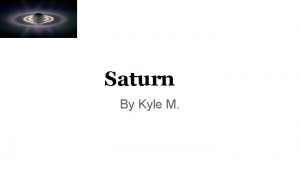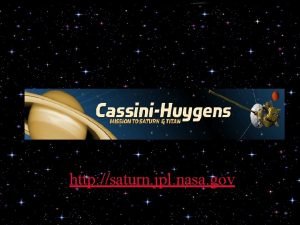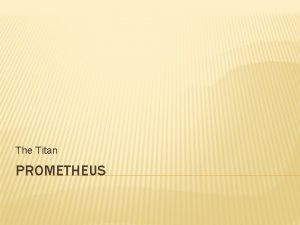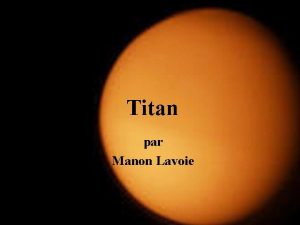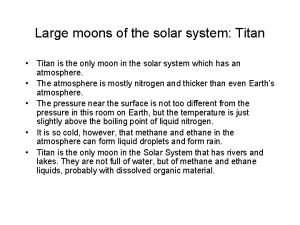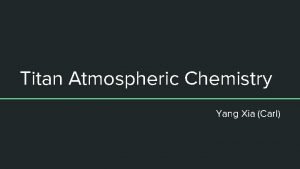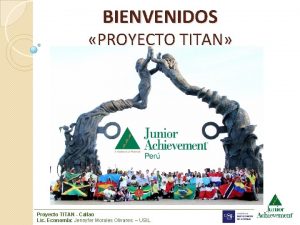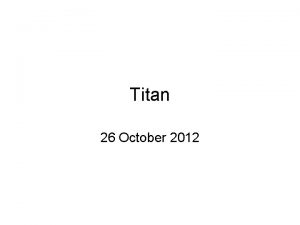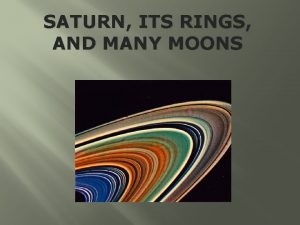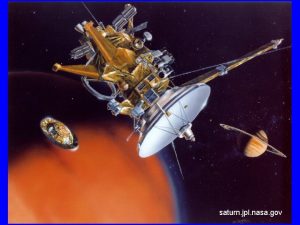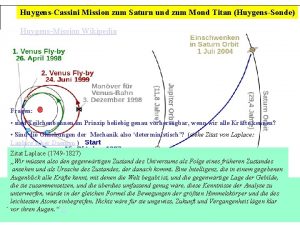CassiniHuygens Mission Saturn and Titan June 2004 The








































- Slides: 40

Cassini-Huygens Mission Saturn and Titan June 2004: The Cassini spacecraft reached its ultimate destination: the Saturn system.

Cassini-Huygens Mission Saturn and Titan The Cassini-Huygens mission is a cooperative project of NASA, the European Space Agency and the Italian Space Agency.

Cassini-Huygens Mission Saturn and Titan Cassini has been en route to Saturn for over six years. It was launched on October 15, 1997 aboard a Titan IVCentaur rocket.

Cassini-Huygens Mission Saturn and Titan On January 15, 2001, 17 days after its closest approach to Jupiter, Cassini looked back to see the giant planet as a thinning crescent.

Cassini-Huygens Mission Saturn and Titan Cassini compiled this image of Saturn in November 2003, from a distance of 111. 4 million km (69. 2 million miles).

Cassini-Huygens Mission Saturn and Titan At that time, Cassini was not yet close enough to capture the clarity of this ultraviolet image taken by Hubble. Cassini photo. Hubble ultraviolet image.

Cassini-Huygens Mission Saturn and Titan As Cassini approached Saturn, however, it sent back increasingly detailed images. Astronomers watched two storms merge in Saturn’s southern hemisphere from February to March, 2004.

Cassini-Huygens Mission Saturn and Titan Intricate cloud patterns and small moons near the rings become visible as the spacecraft speeds toward its destination.

Cassini-Huygens Mission Saturn and Titan On June 11, 2004, Cassini entered the Saturn system with a flyby of Phoebe, an outer moon.

Cassini-Huygens Mission Saturn and Titan Cassini deployed its braking system and was captured into Saturn’s orbit in July, 2004.

Cassini-Huygens Mission Saturn and Titan Cassini can "see" in wavelengths what the human eye cannot, and "feel" magnetic fields and tiny dust particles which no human hand can detect. Note: Cassini-Huygens is the largest interplanetary spacecraft ever built.

Cassini-Huygens Mission Saturn and Titan The orbiter provides information on Saturn’s planetary structure and rings, as well as temperature, winds, clouds, magnetic fields and lightning.

Cassini-Huygens Mission Saturn and Titan Cassini also studies Saturn’s numerous moons and "icy satellites. "

Cassini-Huygens Mission Saturn and Titan Scientists will use this information to understand the nature and environment of Saturn during its formation and early evolution.

Cassini-Huygens Mission Saturn and Titan In December 2004, the Huygens probe will separate from Cassini and begin its 22 -day journey to Titan, Saturn’s largest moon.

Cassini-Huygens Mission Saturn and Titan On January 14, 2005, the probe will descend through Titan's murky atmosphere and land on the surface about two and half hours later.

Cassini-Huygens Mission Saturn and Titan The probe's instruments will directly sample Titan’s atmosphere and attempt to obtain images of the surface as it descends.

Cassini-Huygens Mission Saturn and Titan Though the Huygens mission will last only a few hours, Cassini’s four-year exploration will entail over 70 orbits around the ringed planet and its moons.

Cassini-Huygens Mission Saturn and Titan Unlike the Mars Rovers, the Huygens probe will collect data during its descent. We don’t know if it will survive the landing on Titan.

Cassini-Huygens Mission Saturn and Titan THE SLIDES FOLLOWING THIS ONE PRESENT THE LATEST FINDINGS ON TITAN.

Cassini-Huygens Mission Saturn and Titan TITAN (10/2004): Wide-angle image, with a scale of 6 km (3. 7 miles) per pixel.

Cassini-Huygens Mission Saturn and Titan TITAN (10/2004): Mediumresolution view on a scale of. 85 km (. 53 miles) per pixel.

Cassini-Huygens Mission Saturn and Titan Visual and infrared spectrometer falsecolor images at 3 IR wavelengths: 2 microns (blue), 2. 7 microns (red), and 5 microns (green)

Cassini-Huygens Mission Saturn and Titan Image processing techniques reveal surface details: Single image with basic cleaning of corrupted pixels. Multiple images with enhanced contrast. Further processing sharpens edges of features.

Cassini-Huygens Mission Saturn and Titan Left, image taken at a range of 340, 000 km (211, 000 mi. ) with view width of about 2000 km (1200 mi. ). The three images below show details from the larger one, each approximately 300 km (186 mi. ) across.

Cassini-Huygens Mission Saturn and Titan Radar image taken from 1200 km (745 mi. ) above the surface. Image is about 150 km (93 mi. ) wide and 250 km (155 mi. ) long. The smallest details are about 300 meters across.

Cassini-Huygens Mission Saturn and Titan TITAN Surface viewed through two different IR wavelengths: IR wavelength of 2 microns. IR wavelength of 1 micron.

Cassini-Huygens Mission Saturn and Titan Expected landing site of the Huygens probe, January 2005: Wide-angle image with a scale of 10 km (6. 2 mi. ) per pixel. Landing site is in the black box. Narrow-angle image of the landing site at a scale of 0. 83 km (. 5 mi. ) per pixel.

Cassini-Huygens Mission Saturn and Titan TITAN (10/2004): Composite from 4 Cassini UV images

Cassini-Huygens Mission Saturn and Titan Comparison of false color radar image to visual image of Titan.

Cassini-Huygens Mission Saturn and Titan This image shows a bright storm that appeared in mid-September at the latitude of one of the rare westward jets on Saturn. This latitude band has come to be called "Storm Alley" due to the large amount of activity seen there during 2004.

Cassini-Huygens Mission Saturn and Titan Saturn hosts its own miniature solar system, with an entourage of more than 30 moons. This image shows Saturn's A and F rings, along with three of the moons that orbit close to them. Atlas Janus Prometheus

Cassini-Huygens Mission Saturn and Titan Mimas Tiny Mimas is dwarfed by a huge white storm and dark waves on the edge of a cloud band in Saturn's atmosphere.

Cassini-Huygens Mission Saturn and Titan Apoapsis - the point in the orbit farthest from Saturn for the current orbit occurred on November 21 st.

Cassini-Huygens Mission Saturn and Titan This dazzling view looks beyond gigantic storms near Saturn's south pole to the small but clear disc of Tethys (1, 060 km. , or 659 mi. , across). Clouds and ribbons of gas swirl about in the planet's atmosphere in the foreground, while a tremendous chasm is visible on the icy moon. Tethys

Cassini-Huygens Mission Saturn and Titan Tethys’ battered surface has a neutral hue. This image is a mosaic of two footprints. Three images taken in the red, green and blue filters were taken to form a natural color composite which reveals a world nearly saturated with craters - many small ones lie on top of older, larger ones, suggesting an ancient surface. This moon is known to have a density very close to that of water, indicating it is likely composed mainly of water ice.

Cassini-Huygens Mission Saturn and Titan Saturn's lonely moon Mimas is seen against the cool, blue-streaked backdrop of Saturn's northern hemisphere. Mimas This part of the atmosphere appears darker and bluer than the warm brown & gold hues seen in Cassini images of the southern hemisphere, due to preferential scattering of blue wavelengths by the cloud -free upper atmosphere.

Cassini-Huygens Mission Saturn and Titan Cassini pierced the ring plane and rounded Saturn on Oct. 27 2004, capturing this view of the dark portion of the rings. A portion of the planet's atmosphere is visible here, as is its shadow on the surface of the rings.

Cassini-Huygens Mission Saturn and Titan This arrowhead-shaped feature is approximately 30 km. (19 mi. ) across, and is formed from two lines that intersect. One can distinguish other linear features that follow the left side of the "arrow" and perhaps interact in some way with a dark spot. Straight lines may represent fractures or faults in the icy crust, or they may form from material that has flowed or has been shaped by wind, either recently or in the distant past.

Cassini-Huygens Mission Saturn and Titan An intriguing knotted ringlet within the Encke Gap is the main attraction in this image. The Encke Gap is a small division near the outer edge of Saturn's rings that is about 300 km. (190 mi. ) wide. The tiny moon Pan (20 km. , or 12 mi. across) orbits within the gap and maintains it. Many waves produced by orbiting moons are visible.
 Titan mission
Titan mission Titan sdr
Titan sdr Organic oil recovery
Organic oil recovery Titan iv
Titan iv 12 titan gods
12 titan gods Titan va uning qotishmalari
Titan va uning qotishmalari Kemisk beteckning guld
Kemisk beteckning guld Greek god family tree
Greek god family tree Coloplast titan otr
Coloplast titan otr Titan thespians
Titan thespians Titan intranet pricing
Titan intranet pricing Periodiske system elektroner
Periodiske system elektroner Titan programming language
Titan programming language Psiholojki serial
Psiholojki serial Olympian gods vs titans
Olympian gods vs titans El titan cronos
El titan cronos Deimos satélite radio orbital medio
Deimos satélite radio orbital medio Titan
Titan Coloplast titan xl
Coloplast titan xl Ppecb titan
Ppecb titan He is the only titan who is brave enough to fight uranus.
He is the only titan who is brave enough to fight uranus. Chinese media planning
Chinese media planning E titán modulok száma
E titán modulok száma Tffan_23
Tffan_23 Moon titan
Moon titan Entrenamiento titan desert
Entrenamiento titan desert Kitware titan
Kitware titan Demeter realm
Demeter realm Aberrant titan
Aberrant titan Kronos saturn
Kronos saturn Mars, jupiter, and saturn show retrograde motion because
Mars, jupiter, and saturn show retrograde motion because Stonehenge planetary orbits
Stonehenge planetary orbits Jupiter is noticeably oblate because:
Jupiter is noticeably oblate because: Uranus distance from sun
Uranus distance from sun Characteristics of the saturn
Characteristics of the saturn Characteristic of mars
Characteristic of mars Saturn presentation
Saturn presentation Saturn presentation
Saturn presentation What shape is saturn
What shape is saturn Saturn prezentacja
Saturn prezentacja Saturn prezentace
Saturn prezentace
